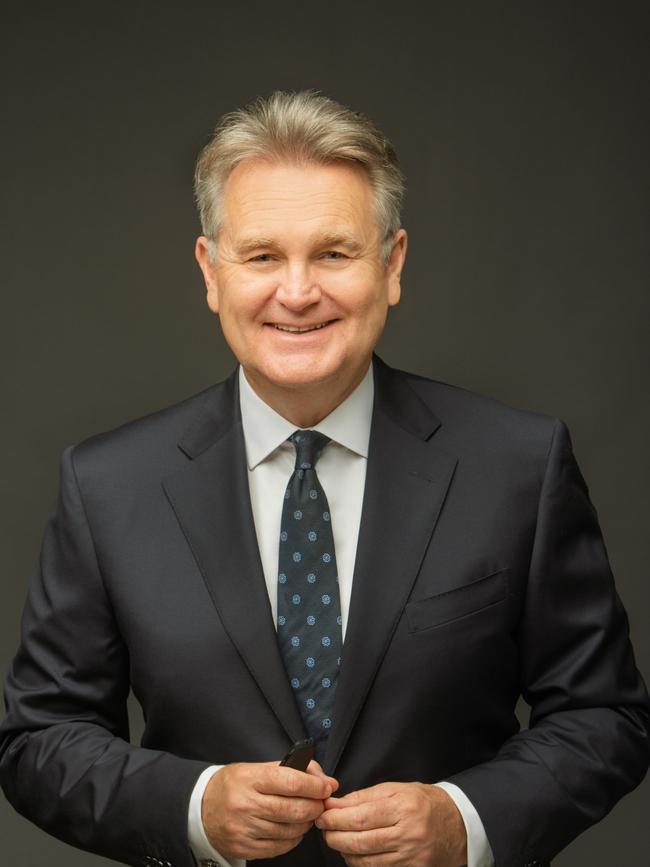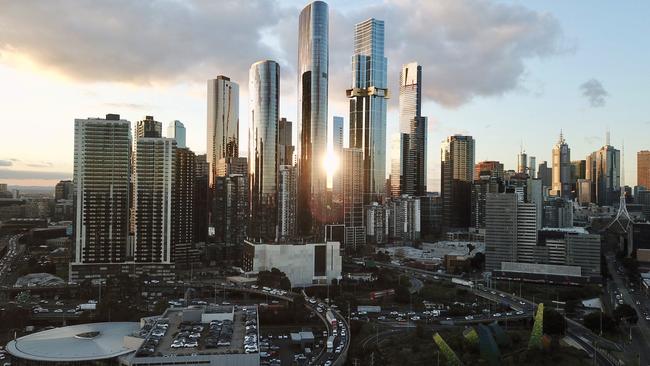
The reason Australia offers good prospects is because we offer a relatively safe community, access to continued population growth, and a culture that is predisposed towards (bordering on an obsession with) home ownership. There are (some) richer countries than Australia as measured by GDP per capita (in USD) such as the US as well as smaller places like Ireland, Norway, Denmark.
But none, in my view, offer the combination of growth prospects, personal freedoms, quality of life, access to a cosmopolitan lifestyle (mostly in the big cities) and an agreeable climate. The only places that might come close to offering the opportunity, and quality of life that we enjoy in Australia are parts of the US, especially Texas and maybe the Carolinas. Although even brash Australians might be taken aback (a bit) in America by Texas’s famed self-confidence.

Consider the attributes that drive Australian property. (On this topic, I will speak in round numbers.)
Both Melbourne and Sydney are cities of five million. By the mid-2050s, say 30 years hence, a single generation into the future, official projections place both cities at closer to seven million. That’s two million added to a base of five across the career of a current-day 28-year-old. (These are conservative medium projections; we’re currently tracking more than an extra million per decade in these two capitals alone.)
I say to that 28-year old, to that Millennial/Gen Z cusper living and working in Australian property, that across their working life it is Australia that will offer better if not the best prospects as well an unquestionably better quality of life.
Maybe you’ve got a hankering to test your mettle in London or Paris? My reading of official projections over the coming 30 years is for both cities to add a net extra one million to current-day population bases of nine and 10 million. Two-on-five is a better property equation than one-on-nine let alone one-on-10. Three-on-five (as we are currently tracking) is a rocket-fuelled equation for the property industry.

Young property-trained Australians! I say to you, holiday in glamorous global hotspots; do a gap year there; but invest your prime property career years here.
Australia offers a fertility rate of 1.6 births per woman which is half the rate that applied in 1961. But it is a higher rate than that which applies in the UK, in Japan, in South Korea, across Europe. In South Korea, this rate is less than 1.0. The US has a higher fertility rate than Australia but it is still below replacement, that is 2.1.
The growth driver to developed-world property demand in the 21st century is a combination of skilled immigration programs combined with an at-best moderate fertility rate. In turn a moderate fertility rate requires young couples to be confident in and optimistic about the future. This is why the fertility rate is higher in Australia than in, say, Russia and China (and especially given than actual rates may be less than published rates). Young Australians are simply more optimistic about bringing children into the world.
Population mix
The proportion of Australia’s resident population (including students) born overseas was measured at 31 per cent last year. Taking into account the yoyo effect on immigration during and following the pandemic this figure could rise to, say, 33 per cent later this decade. At that time Melbourne and Sydney would then likely have about 36 per cent of their population bases born overseas.
More than one-third of the population born overseas is a high proportion but it’s not out of kilter with figures I have sighted for other similarly-scaled Western cities such as London, Miami, San Diego.
What is unusual is the proportion of Australia’s population born overseas: our 33 per cent compares with 15 per cent for the UK, 14 per cent for Germany, 2 per cent for Japan and a proportion that rounds to zero for China.
The proportion of the resident population in the US born outside America was last measured at about 15 per cent. Even allowing for, say, 13 million (as reported) to have “flooded” across the Southern border, the overall proportion of the US population born abroad today would be no more than 16-17 per cent.
By any measure Australia’s immigrant (including students) mix is elevated, and globally unique. Only smaller western nations such as Switzerland and New Zealand come close to the Australian proportion with 29-30 per cent, respectively.
Many countries in the Middle East do have higher proportions of the population born overseas such as, for example, Saudi Arabia where this figure is 38 per cent. In the United Arab Emirates the “born abroad” proportion is 89 per cent. These hyper-elevated proportions are created by the deployment of guest workers at scale. Australia, too, has guest workers but not in the same proportions as apply in parts of the Middle East.
There is no shortage of would-be immigrants seeking a better life in Australia. And especially in the years following the pandemic. From a global perspective Australia is regarded by some as being isolated and perhaps even a tad “provincial”, and yet it is this isolation that appeals to immigrants, and especially following the calamity of war or pandemic. Indeed, the scarier the events in the rest of the world, the prettier Australia looks to would-be immigrants.
Safe harbour
The long view of Australia’s prospects for the balance of the 21st century presents a nation that could offer, and that could be expected to offer, refuge and opportunity to (possibly) millions subjected to the ravages of conflict, plague and climate calamity.

The point is that in a world of collapsing fertility rates where natural increase (excess of births over deaths) flips to natural decrease, a continually growing Australia will stand apart. We will be regarded as a place of opportunity in a slow-growth no-growth developed world.
A top-of-their-game 48-year-old infrastructure guru is more likely to be building tunnels and bridges and housing estates in Australia than in Europe (or even in developed Asia) in the year 2050. And that’s because our cities, our spending capacity, our tax base will continue to grow each decade throughout the 21st century. (And so too will grow our expectations of lifestyle.)
Compare our prospects with the UN’s prospects for Japan: 127 million population in 2000, 74 million in 2100. The UN has Australia growing from 19 million in 2000 to 39 million in 2100, although the (more informed) ABS (medium projection) has Australia at 39 million much earlier, in 2071. At these rates Australia could be 45 million by 2100.
Maybe we should be attracting those 28-year-old engineers from Japan?
Here is the reason why global businesses currently headquartered in Japan, the US, the UK, and Europe wanting safe, secure, long-term growth opportunity might choose to commit to operations within and/or from Australia.
Our American friends should regard Australia as “just another Texas” or “just another Florida”. Our British friends should see Australia as “just another England-south-of-the-Liverpool-line” but with vastly better weather.
Official (medium) projections of the Australian population published by the ABS in November show a population of 39 million by 2071 with Melbourne and Sydney at 7-8 million. Smaller city projections (by state authorities) are a bit of a mishmash: some have been updated, others have yet to incorporate the 2021 Census results.
Australian gems
My overall assessment, based on revised published projections, of the places to watch within Australia include not just the student-fuelled, skilled-worker-hungry capital cities but also cities, towns and villages within a vast capital city-enveloping lifestyle zone that fuses together sea-change and treechange communities. I am also a fan of emerging tradie towns scattered across this lifestyle zone with examples such as Warragul, Morisset, Gisborne, Yanchep and Bacchus Marsh.
And then there are pivot towns like Bunbury and Mackay that act as the go-between places for resource basins and never-satisfied overseas energy and resources markets.
All this growth, all these workers, all these young Australians both locally born and immigrant busily building, creating and, yes, it has to be said, procreating, to create a bigger, better, stronger nation. Where else would you rather be?
That is why you should have operations in Australia. That is why you need at the very least a regional head office in George St, in Collins St, on St Georges Tce. Australia delivers developed-world growth prospects at scale combined with an unparalleled quality of life and manageable (if not modest) sovereign risk. Oh, and we offer better weather than Canada, greater critical mass than New Zealand, and more lifestyle options than the UK’s singular London-or-the-home-counties option.
Australia has its failings and its challenges, as does any nation. But we also have a history of and a capacity for accommodating growth both locally created and imported. It is this capacity for growth that sets us apart not just now but also in the decades to come.
In another column I will explain the black swan events that I think could knock Australia off this trajectory.
But for the moment, at this time in history, it has to be concluded that Australia’s property prospects are better than other developed world nations.
Bernard Salt AM is founder and executive director of The Demographics Group; data by data scientist Hari Hara Priya Kannan.








It is a question that anyone (and any business) in Australian property should be asking themselves: is Australia a good place to invest my youth, my energy, my career, my life over the coming decade? Is Australia (and is property) a good proposition, is the question. I say that Australia is a good place to invest and especially in property and not just in the short term. Australia is far from perfect but, all things considered, I think it’s the best option available.